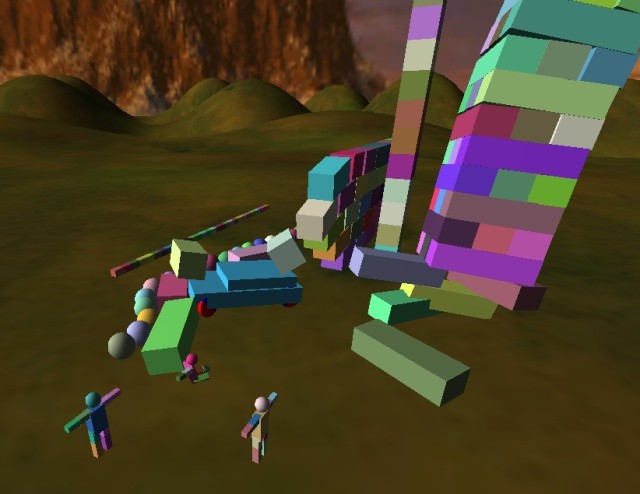 |

Submitted by , posted on 13 November 2004
|
 |

Image Description, by

This is a screenshot from JigLib, a rigid-body physics library I've been working on for the last couple of weeks. It's based on the paper "Non-convex rigid bodies with stacking" by Eran Guendelman, Robert Bridson and Ronald Fedkiw. You can find the paper here and some slides here, though I've done a few things differently.
The basic idea of the algorithm is to predict collisions and handle them iteratively using impulses. The basic scheme is pretty simple to implement (no need for a LCP solver etc), and gives almost completely jiggle-free resting contact solutions - hence the name JigLib. Adding joints (for ragdolls etc) is also simple.
You can find a detailed description of how I implemented things, together with a Windows demo here. Hopefully when it's a little more mature I'll make libs/headers available (Windows and linux), if not the source.
|
|

